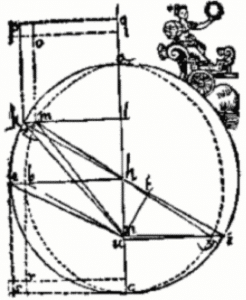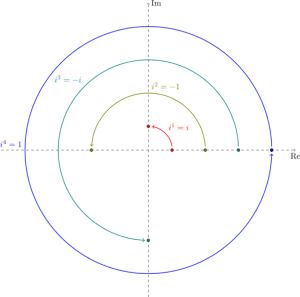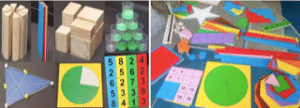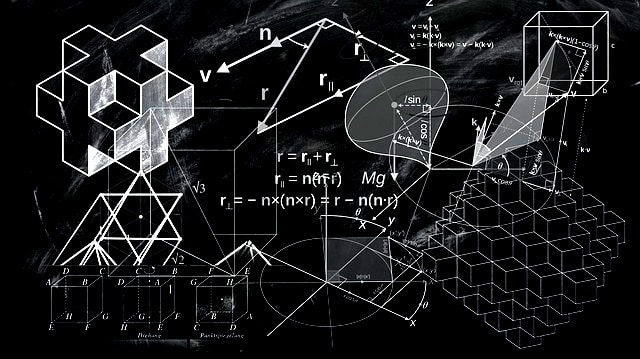“Without Mathematics, there’s nothing you can do. Everything around you is Mathematics. Everything around you is numbers.” – Shakuntala Devi
Do you like Maths and think it’s fun? Do you want to hear from your kids – “It’s Maths time!”?
Mathematics is the universal language and is incredibly powerful. From basic counting to quantum mechanics, numbers can really describe how the universe works around us.
Is there a way to make Maths fun by finding the beauty in the world around you?
Maths is everywhere. We will need thousands of pages to even touch upon the areas where Maths is involved. Let’s look at just a few of these exciting areas.
The invisible force behind the celestial bodies
Planets and stars orbiting around each other involve equations of motion. In other words, these rules apply to everything in the universe.
Since people first looked up and wondered what the lights in the sky were, we have tried to solve the mysteries of the stars and planets. Mathematics has always been a powerful tool for studying, measuring and calculating the movements of the planets. Mathematics was used to both discover, then prove the first basic “rule” of our planets – that they travel around the sun, not around Earth. In the 1500s and 1600s, now famous men such as Nicolaus Koppernik (Copernicus), Isaac Newton and Galileo Galilei worked hard to convince the authorities of this truth.
Reference and further study: https://nrich.maths.org/2482

The saga of Imaginary Numbers and Quantum Mechanics
Imaginary numbers have got a reputation of their own.
You might have done square root many times. Have you tried doing a square root of a negative number? Did you notice that multiplying two negative numbers always result in a positive number?
However, the square root of negative 1 (-1 or i) doesn’t make any sense. When you multiply i by itself (i x i), it results in a negative number -1.
Moreover, it turns out to be able to describe how things rotate, and that became the foundation of quantum mechanics.

Image source: Wikimedia Commons
Life revolves around Fractals
Fractals are self-repeating geometrical shapes. They can also be visualised as never-ending patterns. This means if you take a small part of fractal it will resemble the whole. You can continue going smaller and smaller and yet this property will never cease to exist.
Fractals permeate our lives, appearing in places as tiny as the membrane of a cell and as majestic as the solar system. Fractals are the unique, irregular patterns left behind by the unpredictable movements of the chaotic world at work.

Image credits: Pixabay/Wow Phochiangrak
Fractals have always been associated with the term chaos. We can elegantly describe fractals as “the patterns of chaos.” Fractals depict chaotic behaviour, yet if one looks closely enough, it is always possible to spot glimpses of self-similarity within a fractal.
Reference and further study: https://kluge.in-chemnitz.de/documents/fractal/node2.html

Image credits: Pixabay/Gerd Altmann
Geometry in everything around us
Have you noticed the façade of any building? Did you notice any geometrical figures? If no, try again next time you are out on a walk around your locality.
Kids can learn a lot from the use of geometrical figures in houses, buildings, and bridges. For instance, these geometrical figures are the main reason behind the structural integrity of these man-made artifacts.

Making Maths fun for your kids
How can we get kids enthusiastic about Maths? An involved approach of teaching and learning where they ‘learn by doing’. Hands-on activity or ‘experiential learning’ is the way forward across the world. Kids can learn Maths and Science in a way that can be related to real-life scenarios and situations. Maths for kids should translate to a connection between contexts – situational and everyday life.
Here are some of the way you can make Maths fun for your kids:
- Maths makes your life easier: How much would it cost you for a pack of chocolates if there is a 10% discount on the whole pack instead of buying in loose? You ask your kids to use Maths to figure this out and save money.
- Have fun with patterns: How many squares can you fit into your lunch box? You can make a quick prediction based on patterns you see.
- Puzzles help you appreciate Maths: Love puzzles? Solving a Rubik’s Cube is one of the best examples to explain various concepts of Maths. Some of the mathematical concepts involved in Rubik’s Cube are differential equations and probability. You can use other similar maths games for kids to evoke the curiosity.
- Finding patterns in everything around you: As discussed before in this article, you can encourage your kids to find mathematical patterns in everything around you. For instance, be it a fern leaf (an example of a fractal), the façade of a building (various geometrical shapes) or the interior of your home, all of them will teach something.
- Maths can be an art too: Multiple seemingly random patterns create an art. For example, you can plot mathematical concepts like the Fibonacci sequence in intricate art. Similarly, you can create unique designs using angles, blocks, compasses, rulers. Using symmetry to create mirror images can create unique designs too.
Conclusion
There are countless reasons to find an appetite for Mathematics. By encouraging your kids to ask questions like why, how or what if, you can help spark curiosity in them and set their foundation. Above all, you can help them develop the love of nature and patterns.

We, at NumberNagar®, believe in student-centric, disruptive methods of learning. We demonstrate various concepts in our classrooms, students can explore activities individually and attain conceptual clarity.
(Cover image credit: Pixabay/Gerd Altmann)
This article is co-authored by Parimita and Nishant.
Parimita Krishna
Latest posts by Parimita Krishna (see all)
- How Personalised Learning can make your kids curious? - 14 June 2019
- What’s new in CBSE and why Experiential Learning is even more relevant? - 31 May 2019
- The Curious Case of Homeschooling in India - 5 April 2019
- Making Maths fun for your kids - 8 March 2019
- Blended Learning: A Perspective on “Learning how to Learn” - 22 February 2019

